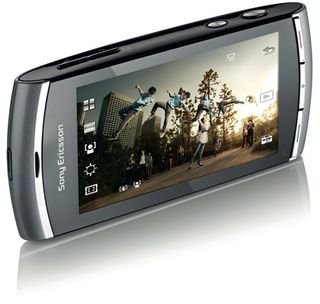Why you can trust TechRadar
The Symbian S60/S^1 operating system is traditionally associated with Nokia handsets, found on devices like the Nokia 5800, N97 and X6.
Despite this, the look and feel of the Vivaz interface is still very 'Sony Ericsson.'
The menus are well laid out and easy to navigate, but because the Vivaz is limited to just one menu screen, some sub-menus are packed with options.

You can avoid venturing into the menus too often if you invest some time customising the home screen.
The default set up offers a row of five widget tabs across the top of the screen. These can be assigned different functions depending on your preferences.
For example, we had tabs housing our favourite contacts, social networking apps, menu shortcuts and a favourite image acting as wallpaper.

Scrolling between the tabs is easy and satisfying, but is slightly less elegant than the traditional Android home screen set up.
The tabulated layout of the Sony Ericsson Vivaz is much tidier than the more crowded approach taken by the X6 and N97 Mini, although there is less information available at a glance.
For those craving a simpler life, fewer home screen options can be set using the Standby Themes in the settings menu.
There's a nice level of customisation on the Sony Ericsson Vivaz, but it's more constrained than some of its contemporaries, particularly the Android-toting HTC Tattoo and LG InTouch Max GW620, where a plethora of widgets are on offer.
Making and taking calls is very straightforward thanks to the dedicated call and end buttons, but we wish we could say the same for locking and unlocking the screen and keys.

Locking the keys should be a one-button affair, but not so with the Sony Ericsson Vivaz.
After hitting the power/lock button you have to either select the lock option on the screen, or hit the power/lock button again.
This might not sound like a chore, but the power/lock button is not particularly easy to press as it's almost flush with the panel it sits in.
When you're not sure if your press has been registered, it's all too easy to press the power button too hard and switch the handset off.
What makes that even more annoying is that the Sony Ericsson Vivaz takes its time closing down, and starting up again isn't exactly lightning fast.

The other danger was forgetting to choose any option from the menu and leaving the keys and screen active in your pocket or bag, from which anything can be tapped and accessed thanks to a resistive screen.
Even after several days of use, this was still grating on us.
Speed of use is an area where the Vivaz also lets itself down. Aside from being slow to start up, the temperamental auto-rotate takes a second or two too long to kick in.
We also had issues with the handset's multi-tasking – although we definitely welcome it as a feature and had no problem switching between applications, it's a little too tricky to close things down entirely.
Simply using the menu or end buttons keeps them open in the background, so you end up with several unnecessary things running, slowing the handset right down and taking away all the advantages of the Vivaz's fast processor.
It is possible to download new apps for the home screen via the PlayNow app store.
This provides music, game and wallpaper downloads as well as apps, but they're generally not cheap and there are very few free options, unlike the wildly successful Apple App Store and Android Market.
Searching through the store is a bit of a chore as it isn't hugely intuitive, but downloading is fairly straightforward direct to the handset - perhaps we're just spoilt by the plethora of much better portals on offer.
Current page: Sony Ericsson Vivaz: Interface
Prev Page Sony Ericsson Vivaz: Overview Next Page Sony Ericsson Vivaz: Calls and Contacts
